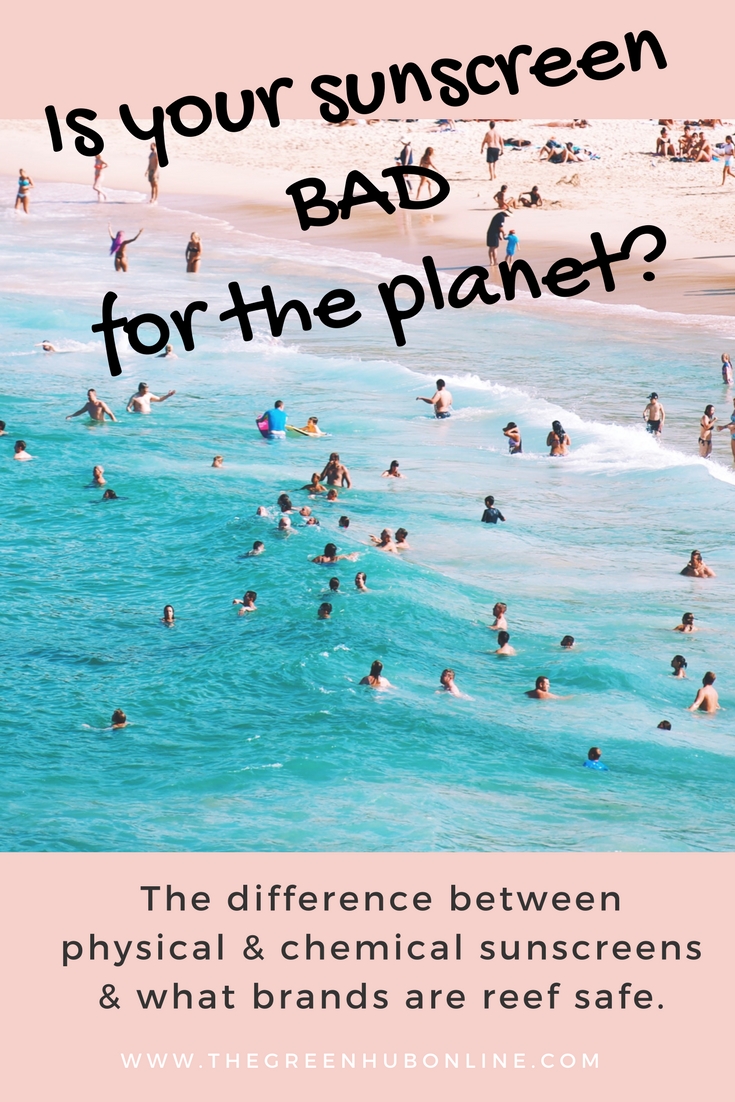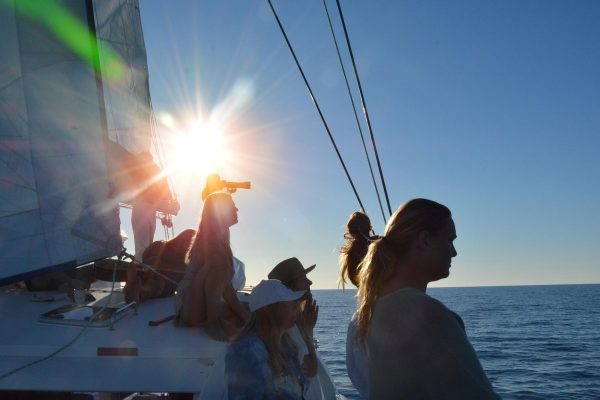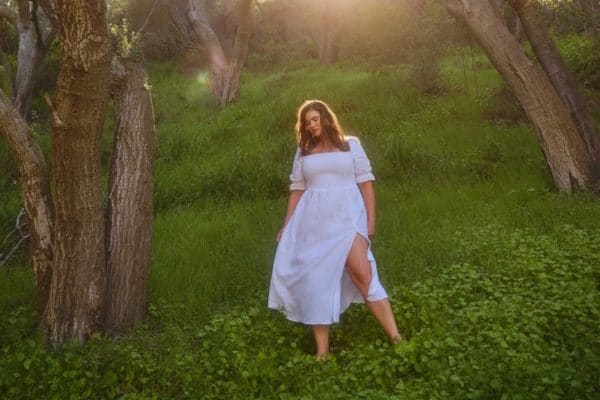What to look for in ‘Reef Safe’ Sunscreen
and the difference between physical and chemical sunscreens
The Green Hub
The Issue
There is no escaping the recent panic that sunscreen is bad for the ocean, with several studies linking it to reef death.
Vogue published an article last year on the topic, with scientific evidence from research conducted in America.
The study found physical evidence that chemical sunscreen containing the chemical oxybenzone was toxic to coral. It has been linked to coral bleaching, DNA damage and endocrine disruption in wildlife.
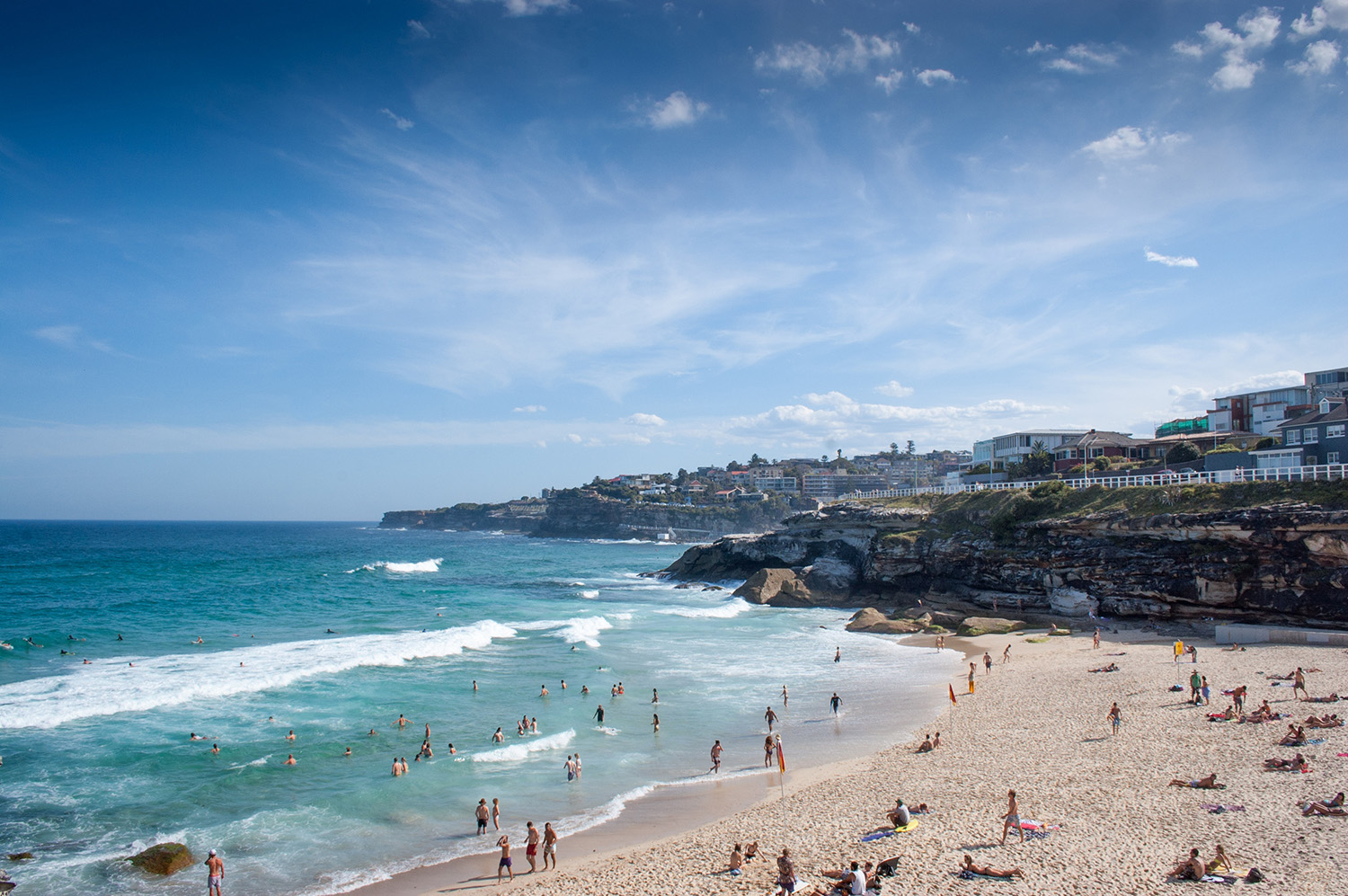
"It can be confusing to know what look for in sunscreen products, especially since there is no consistent answer or ‘reef-safe’ standards."
Oxybenzone, also called BP-3 or Benzophenone-3, is found commonly in sunscreens and make-up with SPF protection. Kate Hall’s recent article ‘How Sunscreen Is Damaging Our Reefs – And What You Can Do About It’ gives a great summary on the issue. It can be confusing to know what look for in sunscreen products, especially since there is no consistent answer or ‘reef-safe’ standards.
*Remember that sunscreen is the last option for sun protection. The Cancer Council recommends avoiding the sun with clothing, hats and glasses.
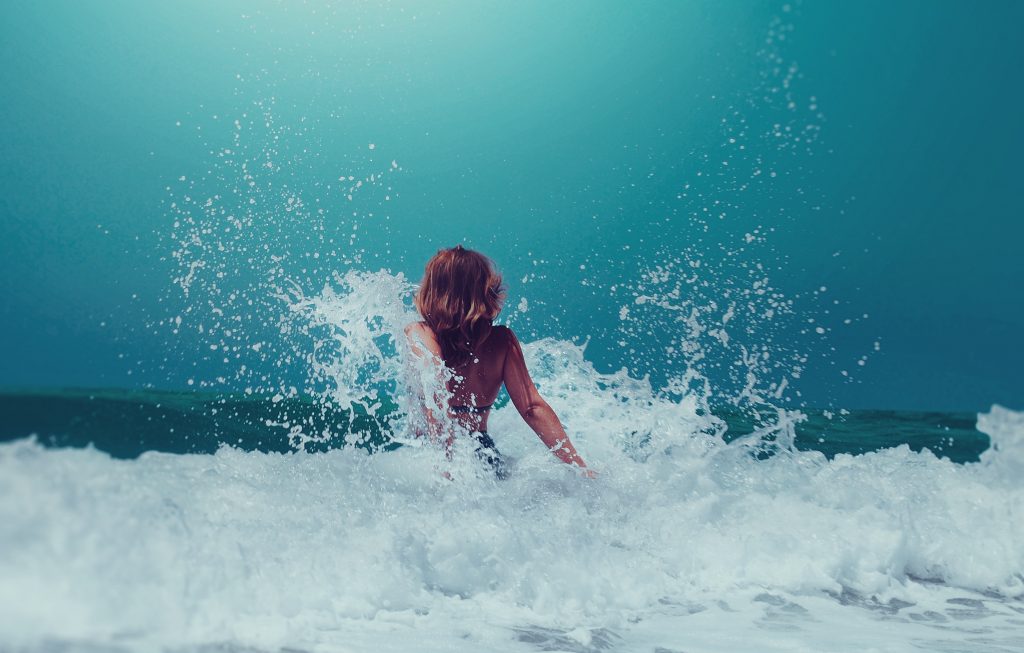
Image from Mohamed Nohassi @Unsplash
Physical or chemical?
The whole purpose of sunscreen is to block harmful rays from the sun damaging the skin – long wave UVA (ultraviolet A) and short wave (ultraviolet B). Sunscreen works in one of two ways to prevent UVA or UVB rays from the sun damaging cells – physically as a barrier or chemically absorbed.
Chemical sunscreen contains ingredients with oxybenzone and various other chemicals that are absorbed under the skin. These chemicals then react with UVA and UVB rays, preventing them from causing damage. Chemical sunscreen has become a popular choice as it comes in a lightweight formula.
Physical (mineral) sunscreen works as a barrier on the skin against the sun, sitting on the surface. Physical sunscreen is made from titanium dioxide or zinc oxide. Physical sunscreen is generally a bit thicker as it sits on the skin. As the popularity of physical sunscreen has increased, mineral sunscreen products have expanded from thick white paste to lightweight formulas.
Between the two, Zinc oxide is considered to be the safest and most natural UV reflector when micronized. There have been claims that nanoparticles from mineral sunscreen may not be safe, there is however no significant evidence. Until there is more research in Australia, look for sunscreen containing zinc oxide and fewer chemicals (avoiding oxybenzone) to avoid potential harm to reefs or wildlife.
Zinc Sunscreen Products
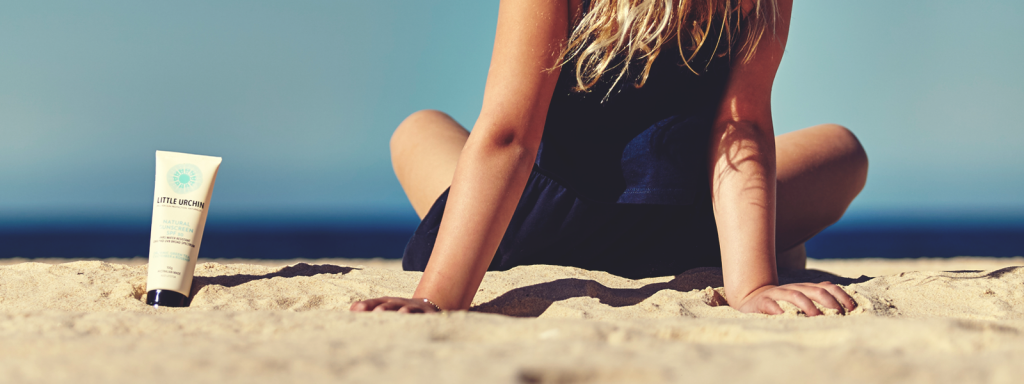
Sea Urchin Natural Sunscreen SPF 30
This is without a doubt the best mineral sunscreen and contains certified organic ingredients. The Australian-made product contains no dangerous chemicals and is even waterproof for up to 3 hours. Although there is no official certification, based on current evidence Sea Urchin products are reef safe and eco friendly.
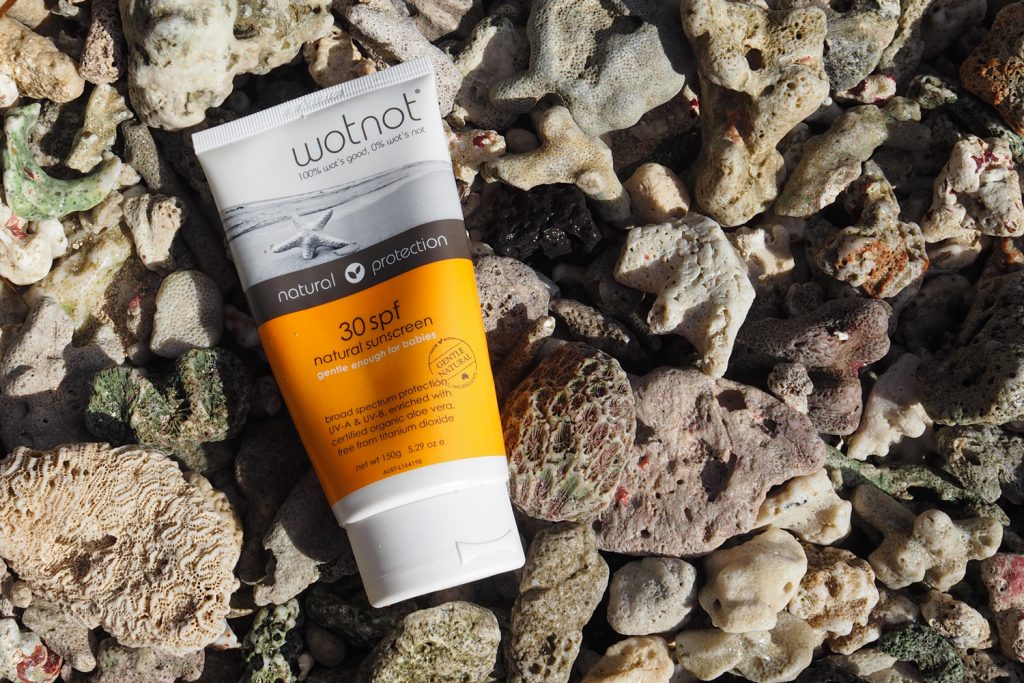
This product has a baby on the front with the tagline ‘gentle enough for babies’. That’s the kind of sunscreen I want on my skin. Again, the organic ingredients are all ‘natural’ and still provide broad-spectrum protection.
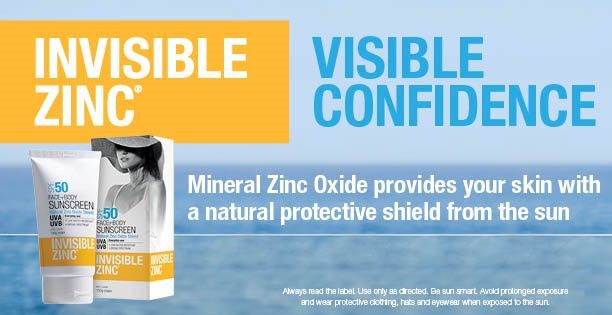
There is a wide range of affordable products from Invisible Zinc, depending on the activity. I like to use the 4hr water resistant product for surfing, as it’s really thick. The products range from Tinted Daywear to Facial Moisturiser and are all made from natural zinc. If you’d like to read more about zinc oxide, click here
Photo by Will Langenberg on Unsplash
*This story contains affiliate links which means we make a small commission on sales generated by clicking the affiliate links. You do not pay any more as a customer and this helps us pay our team and cover our operating costs.
